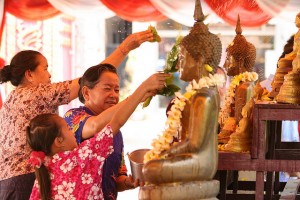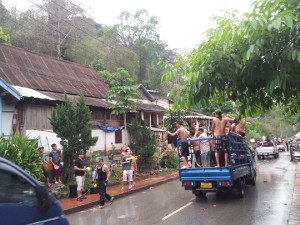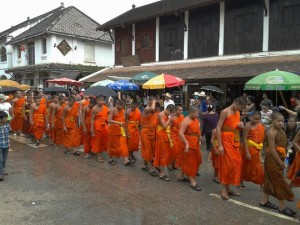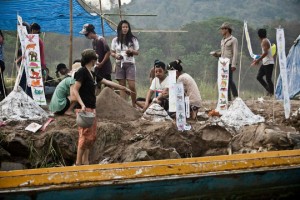
Decorating and cleansing Buddha statues with flowers and perfumed water.
I arrived in Laos about a week ago to find the country buzzing with excitement for the upcoming Laos New Year – called Pi Mai Lao, Boun Pi Mai, the Water Festival, or Songkran, as it is known as in Thailand. Knowing very little about the festival, other than its reputation as a region-wide water fight, I decided to prepare for the festival with some research.
Pi Mai falls on April 13-15,
but as someone who has already been soaked by giggling children armed with water guns and buckets, I can tell you – this is a celebration that lasts for weeks. The main three days of the festival represent the last day of the old year, the “day of no day”, and the first day of the New Year.

Drive-by water fight
The last day of the old year is a day of cleansing and renewal. Within the wats (temples), Buddha images and figures are washed with perfumed water. Families often spend this day cleaning their homes and younger family members wash elders’ hands and ask for blessings for the coming year.
The “day of no day” is a day of celebration and fun.
There is a big colorful parade on the main street in Luang Prabang. And then the water throwing and Beer Lao drinking continues late into the night.

Young monks in the parade in Luang Prabang.
Traditionally, the first day of the new year involves a Baci ceremony with your family or village. It involves making offerings, chants led by elders/leaders, and symbolically attaching kwan (spirit) to the body by tying a white string around your wrists.
Other Pi Mai traditions include making sand stupas at temples and on the Mekong river bank , decorative flowers, and the Miss Lao New Year beauty pageant.
I look forward to sharing my personal experience and pictures after the festival next week. Check back again!

Building sand stupas on the Mekong River